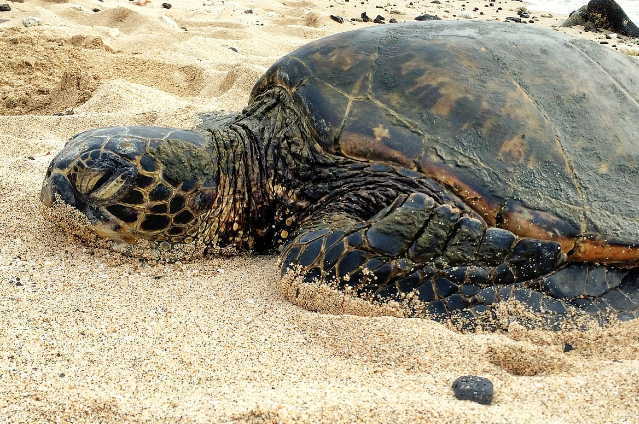
Lately, researchers, this week described remains discovered in north-eastern Spain of a turtle named Leviathanochelys aenigmatica that was about 12 feet long, and weighed a bit under two tons.
Around the sub-tropical seas that shrouded the coasts of the archipelago that made up Europe 83 million years ago, there was one of the largest turtles on record, a reptile the size of a small car braved the dangerous waters.
It is Europe's biggest-known turtle. It dwarfed today's largest turtle which is known as the best for marathon marine migrations. Leviathanochelys nearly matched the largest turtle on record-Archelon.
It was good to be the size of the car considering the huge traffic in the ancient Tethys Sea. Huge marine reptiles with powerful jaws called mosasurs were the largest predators. Attacking any animal of the size of Leviathanochelys possibly could have been done by large predators in the marine context.
Earlier, there was a tendency in marine turtles to increase their body size. Leviathanochelys and Archelon might represent the apex of this process. The reason for this increase in body size has been hypothesized to be predatory pressures.
Other large turtles from Earth's past include Protostega and Stupendemys, both reaching about 4 meters long. The former is said to have lived about 85 million years ago and while the latter around the South American regions for some 7-13 million years ago.
Scientists unearthed the Leviathanochelys remains near the village of Coll de Nargó in Catalonia province of Spain. To date, they have found the posterior parts of the turtle.
The fossil indicated that it possessed a similar leatherback. It appears to have been built for the open ocean returning to land only rarely for spawning.
It shows that gigantism developed in marine turtles independently in separate lineages in North America and Europe. Thus, the Leviathanochelys represents a newly discovered lineage.
Leviathanochelys aenigmatica means 'enigmatic leviathan turtle' owing to it's large size. There was some modification seen in the respiratory system to maximize their breathing capacity at great depths.
The discovery has now led researchers to understand that the evolution of gigantism was seen in more than one lineage that grew to such extreme sizes. It also hints that there may be other ancient giant turtle species waiting to be discovered.
. . .
References:
- livescience.com
- www.indiatoday.in
- www.ndtv.com
